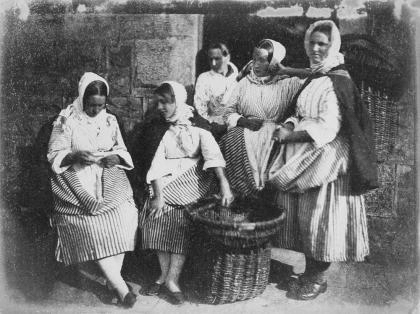
Salt and Silver, the newest special exhibit of the Yale Center for British Art, is a homage to simpler times. Put together in partnership with the Wilson Center for Photography, the exhibition focuses on the influence of the photography method William Henry Talbot developed in the 1840s, using salt and silver nitrate.
The board at the front opens with the sentence: “The photographs in this exhibition are not widely known today.” The humble tone set by the exhibit, however, is contrasted by the artistic breakthrough it showcases. The salt and silver method, as the exhibit explains, through a long journey toward popular acceptance, ultimately became the basis for the way we take pictures now. The exhibit captures the first 25 years of the spread and evolution of this method. Thus, these pictures represent a turning point in history relevant to all of us today, both professional freelancers and iPhone instagrammers alike. Yet, very few people know and appreciate this development.
The salt and silver method, as explained by the brochure and small placards throughout the exhibit, involves soaking a photo print in table salt and then brushing it with gallic acid. This method, in comparison to the ones used before it, allowed picture-taking to become portable and convenient. Suddenly, photography was an art accessible to the common man; through the exhibit, we watch this art catch fire.
The front of the exhibit begins with Talbot’s own pieces: photos of a statue he owned, glassware on a shelf, a portrait of his daughter. Not only does it evidence the painstaking dedication he had to photography — his careful placement of black backgrounds to reduce glare and placing aperture on the lens — but it also gives visitors a sense of his life behind the lens, capturing places important to Sir Walter Scott’s, his idol’s, life. A personal favorite of mine is one photo of a bunch of women sitting on a street in Paris. I can hear Talbot’s mother’s grumbles as she complains about his “Talbotypes,” forcing them to sit and pose for hours while he experimented with different exposures and finishes.
Talbot spent five years researching the salt and silver method before perfecting it. Then, he started sharing “salt and silver” with his friends and family. Later, the method crept into the hands of amateurs and then scholars, before finally achieving popular acceptance.
It’s now reflected in the exhibit that the photos’ scope has gone global. Architecture in Rome, bridge projects in Kiev, buildings in Beijing, portraits in Algeria, Egypt, Syria, Palestine, and on and on and on. The range of subject and theme is great: there are both Parisian idols and French eroticism, commercial portraits and commissioned documentation, royalty and peasants on the street, war scenes and local fishermen and Ancient Egyptian ruins. The photographers also come from a wide-ranging background: trained doctors, botanists, infantrymen. No matter by who, no matter for what, no matter where, the Talbot method seems to be the one constant, capturing pieces of history that might have otherwise been overlooked and forgotten.
I see photographers needing 30 minutes for set-up, ordering subjects of the photo to stand or sit without moving for hours on end. Somehow, the women on the streets of “St. Andrews, Baiting the Lines, North St. Fishergate” have expressive faces. Is the emotion more artificial? They’ve been holding their poses for potentially hours. Yet, the emotions look very, very real.
This exhibition made me think a lot about what we take for granted today: instant production, excess storage space, technical convenience. When exposure is just a dial on your VSCO app and aperture is a knob on your Canon Rebel, instead of actual changes to light and paper, it can be easy to take these things for granted. And when a photo can be taken in a millisecond burst shot, the button is pressed five times for good measure, photography easily becomes a cheapened endeavor. There was once a time where pictures were rare and valuable, where portrait subjects were posed with painstaking care. When photography was a project that could be divvied among two partners, one taking the negative, another the print. A time when photography was a process and not a smartphone app. This exhibit brings us back to that.
After taking us on a trip around the world, the final section of the exhibit — I walked counter-clockwise — brings us back home. There is a collection of photos from the 1856 Yale class album. In the era of all-boy undergraduate student bodies, each photo accompanied by beautiful cursive penmanship, the postings for fraternities and advertisements for commencement were exactly the same as they are today. It was nice to see physical documentation that some things never change. Shoutout to Talbot for giving us a method of capturing even the most trivial pieces of history. I hope we use it well.
Audrey Huang | audrey.huang@yale.edu







